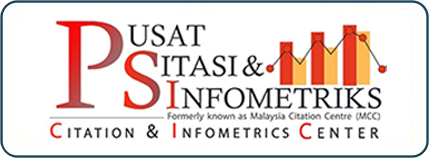A Dosimetric Comparison of VMAT and IMRT for Head & Neck and Pelvis Cancers
DOI:
https://doi.org/10.33102/mjosht.v9i1.311Keywords:
Radiotherapy; 2-D Conventional Radiotherapy; 3-D Conformal Radiotherapy; Intensity Modulated Radiotherapy; Volumetric Modulated Arc Therapy; Nasopharyngeal Carcinoma; Prostate CarcinomaAbstract
Cancer, which is the uncontrolled division of cells, is a leading fatal disease in the world with high mortality rates. It can be treated using several methods, including radiotherapy, which involves ionizing radiation. Radiotherapy on the basis of source placement has two types, i.e. brachytherapy and external beam radiotherapy. External beam radiotherapy has evolved from 2-D conventional therapy to 3-D Conformal radiotherapy (3D-CRT) and then intensity-modulated radiotherapy (IMRT). Modern radiation therapy techniques such as IMRT improve dose conformity and sparing of organs at risk. Volumetric modulated arc therapy (VMAT) is a newly developed technique that uses treatment in arcs. In this report, a dosimetry comparison was performed between IMRT and VMAT. This study was conducted in the Radiotherapy Department of the Institute of Nuclear Medicine and Oncology Lahore (INMOL). Two types of cancer patients were selected for this comparison, i.e., five patients with Nasopharyngeal Carcinoma and ten patients with Prostate Carcinoma. Simulation of these patients was done with the help of a CT Simulator. The oncologists delineated all target volumes and organs. Then suitable fields/arcs were applied, which cover volumes effectively. This was followed by the optimization of plans for both techniques for every patient. Finally, evaluating parameters were compared, including volume coverage, conformity index, homogeneity index, organ doses, and monitor units. We obtained better results of target conformity indices from VMAT (1.16 and 1.25) than IMRT (1.24 and 1.30). VMAT was better in organ sparing too. Also, VMAT shows very few monitor units (468 and 733) as compared to IMRT (2325 and 2149). On the basis of the results obtained, it was concluded that VMAT is better than IMRT. This technique will enhance treatment efficiency as it takes less time to obtain the required results. Also, a very less scatter dose will be delivered to the patient.
Downloads
References
International Agency for Research on Cancer. 2018. “Cancer Today.” Gco.iarc.fr. 2018. https://gco.iarc.fr/today/fact-sheets-cancers.
Lin, Deng-Yn, Shi-Ming Lin, And Yun-Fan Liaw. 1997. “Non-Surgical Treatment of Hepatocellular Carcinoma.” Journal of Gastroenterology and Hepatology 12 (9-10): S319–28. https://doi.org/10.1111/j.1440-1746.1997.tb00516.x.
F. M. Khan, The physics of radiation therapy. Lippincott Williams & Wilkins, 2010.
Teo, Peter M.L., Brigette B.Y. Ma, and Anthony T.C. Chan. 2004. “Radiotherapy for Nasopharyngeal Carcinoma—Transition from Two-Dimensional to Three-Dimensional Methods.” Radiotherapy and Oncology 73 (2): 163–72. https://doi.org/10.1016/j.radonc.2004.06.005.
R. Farajollahi, F. Bouzarjomehri, and M. Kiani. 2015. “Comparison between clinically used irregular fields shielded by Cerrobend and standard lead blocks,” Journal of Biomedical Physics and Engineering. 5(2): 77. PMID: 26157733; PMCID: PMC4479389.
J. Mundt and J. C. Roeske, Intensity modulated radiation therapy: a clinical perspective. PMPH-USA, 2005.
Bortfeld, Thomas. 2006. “IMRT: A Review and Preview.” Physics in Medicine and Biology 51 (13): R363–79. https://doi.org/10.1088/0031-9155/51/13/r21.
Alaei, Parham, Patrick D Higgins, Randi Weaver, and Nina Nguyen. 2004. “Comparison of Dynamic and Step-And-Shoot Intensity-Modulated Radiation Therapy Planning and Delivery.” Medical Dosimetry 29 (1): 1–6. https://doi.org/10.1016/j.meddos.2003.10.002.
Otto, Karl. 2007. “Volumetric Modulated Arc Therapy: IMRT in a Single Gantry Arc.” Medical Physics 35 (1): 310–17. https://doi.org/10.1118/1.2818738.
F. M. Khan, P. W. Sperduto, and J. P. Gibbons, Khan’s Treatment Planning in Radiation Oncology:. Lippincott Williams & Wilkins, 2021.
Elith, Craig, Shane E. Dempsey, Naomi Findlay, and Helen M. Warren-Forward. 2011. “An Introduction to the Intensity-Modulated Radiation Therapy (IMRT) Techniques, Tomotherapy, and VMAT.” Journal of Medical Imaging and Radiation Sciences 42 (1): 37–43. https://doi.org/10.1016/j.jmir.2010.11.005.
Wilke, Lotte, Nicolaus Andratschke, Oliver Blanck, Thomas B. Brunner, Stephanie E. Combs, Anca-Ligia Grosu, Christos Moustakis, Daniela Schmitt, Wolfgang W. Baus, and Matthias Guckenberger. 2019. “ICRU Report 91 on Prescribing, Recording, and Reporting of Stereotactic Treatments with Small Photon Beams.” Strahlentherapie Und Onkologie 195 (3): 193–98. https://doi.org/10.1007/s00066-018-1416-x.
Lee, Tsair-Fwu, Pei-Ju Chao, Hui-Min Ting, Su-Hua Lo, Yu-Wen Wang, Chiu-Ching Tuan, Fu-Min Fang, and Te-Jen Su. 2011. “Comparative Analysis of SmartArc-Based Dual Arc Volumetric-Modulated Arc Radiotherapy (VMAT) versus Intensity-Modulated Radiotherapy (IMRT) for Nasopharyngeal Carcinoma.” Journal of Applied Clinical Medical Physics 12 (4): 158–74. https://doi.org/10.1120/jacmp.v12i4.3587.
Wu, Qiuwen, Radhe Mohan, Monica Morris, Andrew Lauve, and Rupert Schmidt-Ullrich. 2003. “Simultaneous Integrated Boost Intensity-Modulated Radiotherapy for Locally Advanced Head-And-Neck Squamous Cell Carcinomas. I: Dosimetric Results.” International Journal of Radiation Oncology*Biology*Physics 56 (2): 573–85. https://doi.org/10.1016/s0360-3016(02)04617-5.
Downloads
Published
Issue
Section
License
Copyright (c) 2022 Muhammad Umar Farooq, Muhammad Basim Kakakhel, Aasia Razzaq, Nauman Amjad, Touqir Ahmad Afridi

This work is licensed under a Creative Commons Attribution 4.0 International License.
The copyright of this article will be vested to author(s) and granted the journal right of first publication with the work simultaneously licensed under the Creative Commons Attribution 4.0 International (CC BY 4.0) license, unless otherwise stated.














